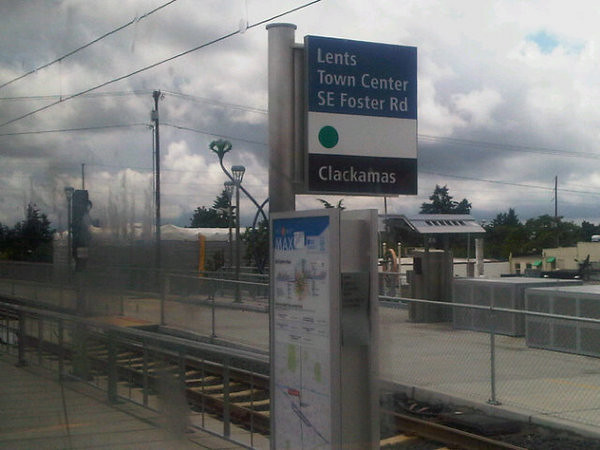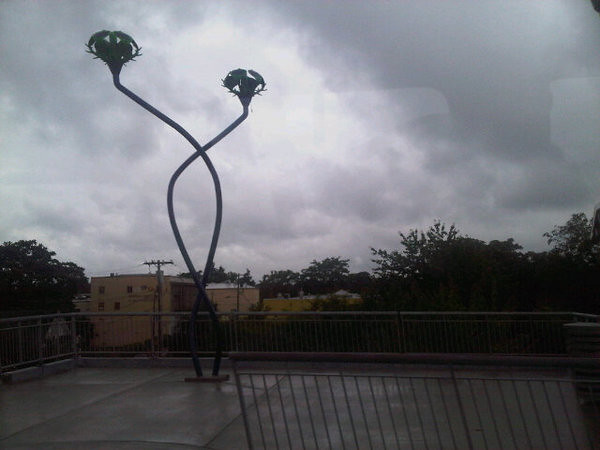A few photos of Prowform and Propform, a pair of public artworks at the Prescott St. MAX station. Prowform is a construction of tubes and vanes at the north end of the station, designed to sorta-resemble the prow of a ship (allegedly), while Propform is the rusty propeller shape in the nearby "Prescott Biozone". Said biozone is of the region's seemingly endless demonstration projects around trying to mange stormwater in an artsy and upscale sort of way. The city's Bureau of Environmental Services maintains a list of such projects, which describes Prowform and Propform thusly:
Brian Borrello and Valerie Otani, Artists; 2004 These sculptures, inspired by the historical ship building industry on Swan Island, are artful representations of the history of the area, as well as innovative approaches to managing stormwater.MAX Yellow Line art guide says of the two, "A stainless steel "ship's prow" gathers rainwater and funnels it to a greenspace.", and "A rusted steel propeller sculpture flowers amidst a swirling pattern of grasses."
I'm not sure what the process was for choosing an overall theme for each MAX station. Generally they're supposed to reference the local neighborhood somehow, and they picked the maritime industries of Swan Island for this one. That's a reasonable choice. So far, so good. But they also had to include a positive environmental / educational message about stormwater management, for whatever reason, and figure out how to mash the two ideas together. These two themes don't have any obvious synergies, which may be why we ended up with a pair of nautical-themed downspouts. I'm not sure what else they could have made and still stayed within the prescribed themes, quite honestly.
It's odd that we have an actual genre of stormwater-themed art here. Maybe I'm the only person who thinks that, I dunno. In recent decades the city's Bureau of Environmental Services (the delicately-named sewer agency) has tackled the multi-billion-dollar Big Pipe and other big-ticket capital projects, and the 1% for Art rules apply to them as much as anyone else, so I suppose that makes for a large pot of money to draw from. For that kind of money we could probably have gotten ourselves a giant gold statue of South Park's Mr. Hankey, or maybe some Futurama sewer mutants, but for whatever reason the city prefers art that focuses strictly on the boring rainwater side of their business. Like Prowform and Propform, Eye River near OMSI has a focus on our heroic struggle against the endless, pitiless rains. Memorial Inscription near PSU isn't water-themed itself, but it's part of a mini-plaza that also includes educational displays so college students can learn important truths about the rain, our friend, constant companion, and eternal adversary. Or whatever.

